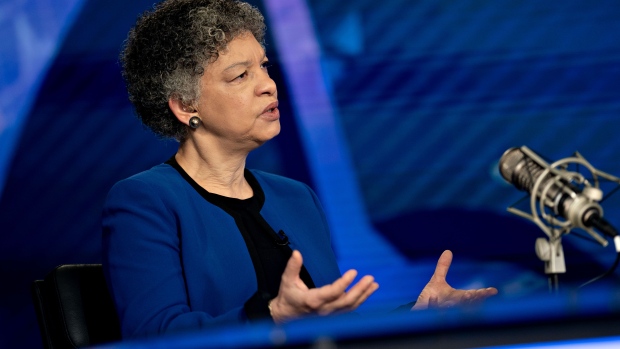Apr 11, 2024
Fed’s Collins Says Data May Warrant Later, Fewer Cuts This Year
, Bloomberg News

(Bloomberg) -- Federal Reserve Bank of Boston President Susan Collins said it may take more time than previously thought to gain the confidence to begin easing policy, possibly warranting fewer rate reductions this year.
Collins said recent data have eased concerns about an “imminent need” to adjust interest rates, though she still expects cuts to begin later this year.
“Overall, the recent data have not materially changed my outlook, but they do highlight uncertainties related to timing, and the need for patience — recognizing that disinflation may continue to be uneven,” Collins said at an Economic Club of New York event Thursday. “This also implies that less easing of policy this year than previously thought may be warranted.”
Data out Wednesday showed a key inflation gauge exceeded economists’ expectations for a third-straight month. Consumer prices excluding food and energy climbed 0.4% from February and 3.8% from a year earlier, the same as the month prior.
Collins said first quarter CPI numbers were higher than she had hoped, but perhaps not too surprising given the string of low readings in 2023.
Investors are signaling the central bank will cut interest rates just twice this year, starting in September, a turn of events that was unthinkable at the start of the year when markets saw roughly six cuts beginning in March.
“Incoming data have eased my concerns about an imminent need to reassess the stance of monetary policy,” said Collins, who doesn’t vote on monetary policy this year. “It may just take more time than previously thought for activity to moderate, and to see further progress in inflation returning durably to our target.”
Collins also pointed to the resilience of the job market, as well questions of whether policy is not as restrictive as expected as reasons for less “urgency to ease.”
The Boston Fed chief emphasized the need for a “patient and methodical approach.” She said policy isn’t on a preset path and officials remain “well positioned” to manage upside and downside risks.
The minutes from the Fed’s March 19-20 gathering underscored officials’ reluctance to lower rates until they have more evidence inflation is firmly on a path to 2%, the rate they see as the sweet spot in a healthy economy.
(Updates with additional comment from Collins in fifth paragraph.)
©2024 Bloomberg L.P.






